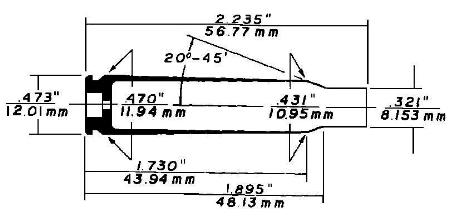


The Navy Version of the Weapon:
The Model 92/93 cal. 7.65mm carbine was made for the Spanish Navy with a contract for 400 rifles.
By Royal Order of 30 January 1893, the 7 mm Mauser rifle received the denomination of “Mauser especial 1892”. The Model 92 Spanish rifle and carbine introduced a new Mauser smokeless powder caliber--7mm. It was a repeating rifle with a cartridge rack containing five smokeless bullets. The smokeless powder made it very difficult for the enemy to spot the location of the shooter. The cartridge rack was located inside the main body of the rifle.
The Spanish Navy decided to purchase 2,000 units of this rifle between
the years 1893 and 1894 with a total cost of 312,000 pesetas. Belting
and 400,000 rifle-grenade cartridges were included in this sum. In
addition, the following rifles, of identical model, were purchased to be
sent to the colonies:
|
|
|
|
|
|
|
|
|
|
|
|
|
|
|
|
|
|
|
|
|
|
|
|
|
The next version, Model 93, was a major step in Mauser development. This rifle was chosen over all contenders in the Spanish rifle trials of the early 1890's. Chambered for the 7mm rimless cartridge, the Spanish Model 93 rifle featured a staggered-column box magazine flush with the bottom of the stock. This five-round magazine not only gave the rifle improved compactness and a better appearance, but also facilitated carrying and afforded protection for the magazine box, which could be clip loaded.
The Army Version of the Weapon:
By Royal Decree of 30 November 1892 Mauser rifle was initially qualified as the "service weapon" for the Spanish Army under the name of "Fusil Mauser Español Modelo 1892", (Spanish Mauser Rifle Model 1892). Only a year later, it would be replaced. In 1893, "...having exhausted all means of improvement and arriving at the moment for the final approval with the modifications proposed by the manufacturer..." the Royal Order of 7 November 1893 declared again this rifle as service weapon under the name of "Spanish Mauser Rifle Model 1893". Consequently of this, Spain decided to purchase 70,000 rifles and 5,000 carbines as well as 18 millions cartridges.
A few years later, this model was produced at the Spanish arms factory in Oviedo at a production cost of 78 pesetas/unit.
Additional Information:
The effectiveness of these new 7mm rifles were soon felt by the U.S. in the Spanish-American War of 1898. Theodore Roosevelt reported on the difficulties of locating the Spanish at Las Guasimas commenting "...as we advanced we were, of course, exposed,...But they themselves were entirely invisible. The jungle covered everything, and not the faintest trace of smoke was to be seen in any direction to indicate from whence the bullets came." The effects of the superior Spanish weapons were again felt at San Juan Hill and El Caney. This experience led to the U.S. development of the 1903 Springfield after being bested on the field of battle by the Model 93.
The Mauser 93 was the basis for the development of the American rifle
Springfield M1903, and it was intended to be used by “first line” or
regular troops.
| Action: | Turnbolt Repeater | |
|---|---|---|
| Total length without bayonet: | 1,235 mm (48.62 inches) | |
| Total length with bayonet: |
1,484 mm (58.43 inches)
|
|
| Length of barrel: | 738 mm (29.06 inches) | |
| Rifling: | 4 grooves with one turn in 8.8 inches | |
| Weight: | 3.95 kg (8.69 pounds) | |
| Ammunition: | 7mm rimless in five round clips | |
| Maximum range |
4,000 meters (4320 yards)
|
|
| Operational range |
2,000 meters (2160 yards)
|
|
| Initial muzzle velocity |
680 meters/sec (2203 feet/second)
|
|
| Charge: | 2,5 grams | |
| OverallwWeight of cartridge: | 25 grams (0.88 oz.) | |
| Overall length of cartridge |
78 mm (3.07 inches)
|
|
| Weight of projectile: | 11.2 grams (.394 oz.)(173 grains) | |
| Muzzle Velocity: | 2,300 feet per second | |
| Bayonet: | Knife-type, .405 kg (.891 pounds) |

de Bordeje y Morencos, F. Fernando, (Contralmirante). Crónica de la Marina Española en el Siglo XIX, 1868 - 1898. Tomo II. Ministerio de Defensa. Madrid. 1995.
deHaas, Frank, Bolt Action Rifles (Chicago: Follett Publishing Company, 1971) 31-33
Roosevelt, Theodore, The Rough Riders (New York: DaCapo Press, Inc., 1990) 89.
San Ricardo, Colonel Enrique Gregori, Head of the Historical Studies and Research of the Spanish Army Historical Service.